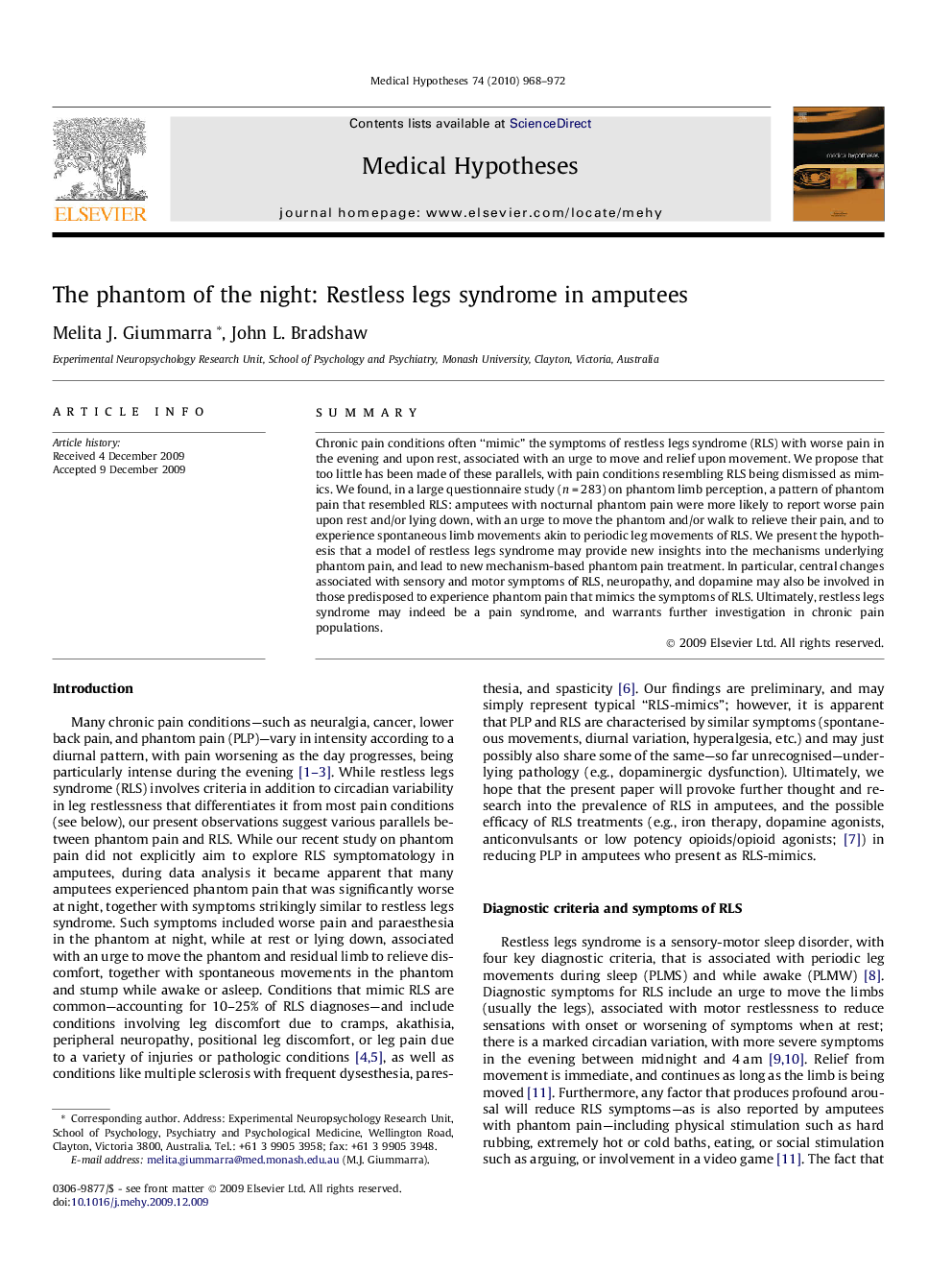| Article ID | Journal | Published Year | Pages | File Type |
|---|---|---|---|---|
| 2489772 | Medical Hypotheses | 2010 | 5 Pages |
Abstract
Chronic pain conditions often “mimic” the symptoms of restless legs syndrome (RLS) with worse pain in the evening and upon rest, associated with an urge to move and relief upon movement. We propose that too little has been made of these parallels, with pain conditions resembling RLS being dismissed as mimics. We found, in a large questionnaire study (n = 283) on phantom limb perception, a pattern of phantom pain that resembled RLS: amputees with nocturnal phantom pain were more likely to report worse pain upon rest and/or lying down, with an urge to move the phantom and/or walk to relieve their pain, and to experience spontaneous limb movements akin to periodic leg movements of RLS. We present the hypothesis that a model of restless legs syndrome may provide new insights into the mechanisms underlying phantom pain, and lead to new mechanism-based phantom pain treatment. In particular, central changes associated with sensory and motor symptoms of RLS, neuropathy, and dopamine may also be involved in those predisposed to experience phantom pain that mimics the symptoms of RLS. Ultimately, restless legs syndrome may indeed be a pain syndrome, and warrants further investigation in chronic pain populations.
Related Topics
Life Sciences
Biochemistry, Genetics and Molecular Biology
Developmental Biology
Authors
Melita J. Giummarra, John L. Bradshaw,
